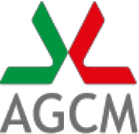OTC PHARMACEUTICALS: INVESTIGATION INTO FEDERFARMA TERAMO ENDS IN FINE
PRESS RELEASE
PHARMACIES: ANTITRUST AUTHORITY FINES TERAMO PHARMACISTS' ASSOCIATION FOR ANTI-COMPETITIVE ARRANGEMENT
Pharmacies in the Province received instructions as to maximum discounts applicable on retail prices of over-the-counter pharmaceuticals, thus limiting competition to the detriment of consumers.
The Italian Competition Authority, at its meeting on 29 May 2008, decided to fine the pharmacists' association of Teramo over an anti-competitive arrangement. In the Authority's view, the association limited competition by indicating to the pharmacies in the Province the maximum discounts applicable to the prices of non-prescription or over-the-counter (OTC) pharmaceuticals. This harmed consumers who had to pay prices higher than those that would have resulted from free competition among the pharmacies. The arrangement began just a few months after the rule came into force introducing free pricing for OTC pharmaceuticals and their sale through alternative channels (such as drugstores and supermarkets) so as to open the way for possible competition.
The Authority fined the association Euro 11,200, calculated using as a base, as is stipulated for business associations, only the members' fees paid to the association of Euro 140,015.
The investigation was launched on 24 May 2007 following a complaint enclosing a circular and a list of 119 OTC pharmaceuticals, for each of which the maximum applicable discount was indicated. Based on the data gathered during the course of the investigation with the assistance of the Guardia di Finanza's Special Units, it emerged that the circular had been sent by Federfarma Teramo to the pharmacies in the Province with a list of 250 pharmaceuticals; so an even longer list than the one sent with the complaint.
For the more limited list of 119 pharmaceuticals, it was possible to check the discounts offered just before and after the circular was sent: it turned out that many pharmaceuticals previously sold with a discount of 10% were then sold without any discount. Specifically, the incidence of 10% discounts fell by 15 percentage points (approximately from 57% to 41%), almost always to a zero discount.
It should be observed that the 250 pharmaceuticals represent 57% of total sales of OTC pharmaceuticals in the Province of Teramo where, furthermore, pharmacies are presently by far the prevalent sales channel for OTC pharmaceuticals.
Rome, 16 June 2008

